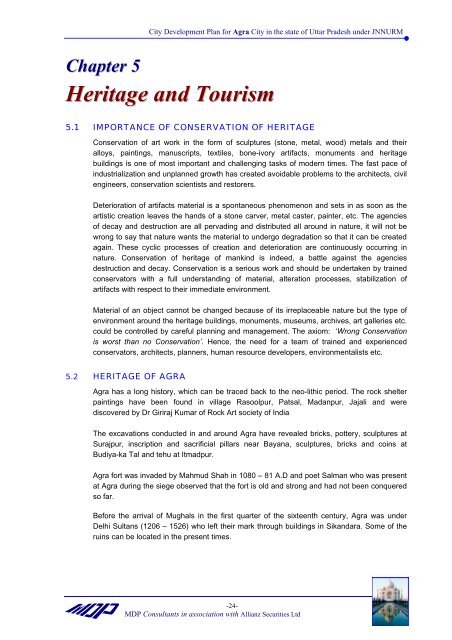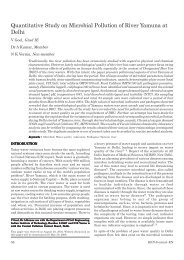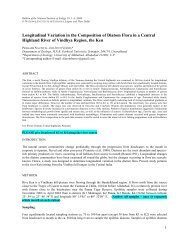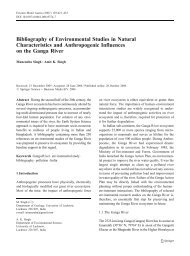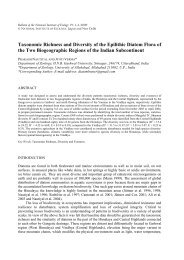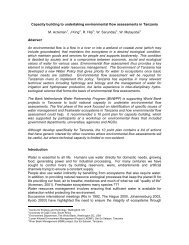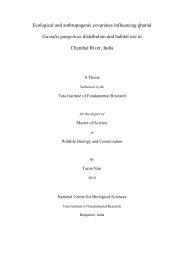JNNURM - GANGAPEDIA
JNNURM - GANGAPEDIA
JNNURM - GANGAPEDIA
Create successful ePaper yourself
Turn your PDF publications into a flip-book with our unique Google optimized e-Paper software.
City Development Plan for Agra City in the state of Uttar Pradesh under <strong>JNNURM</strong><br />
Chapter 5<br />
Heritage and Tourism<br />
5.1 IMPORTANCE OF CONSERVATION OF HERITAGE<br />
Conservation of art work in the form of sculptures (stone, metal, wood) metals and their<br />
alloys, paintings, manuscripts, textiles, bone-ivory artifacts, monuments and heritage<br />
buildings is one of most important and challenging tasks of modern times. The fast pace of<br />
industrialization and unplanned growth has created avoidable problems to the architects, civil<br />
engineers, conservation scientists and restorers.<br />
Deterioration of artifacts material is a spontaneous phenomenon and sets in as soon as the<br />
artistic creation leaves the hands of a stone carver, metal caster, painter, etc. The agencies<br />
of decay and destruction are all pervading and distributed all around in nature, it will not be<br />
wrong to say that nature wants the material to undergo degradation so that it can be created<br />
again. These cyclic processes of creation and deterioration are continuously occurring in<br />
nature. Conservation of heritage of mankind is indeed, a battle against the agencies<br />
destruction and decay. Conservation is a serious work and should be undertaken by trained<br />
conservators with a full understanding of material, alteration processes, stabilization of<br />
artifacts with respect to their immediate environment.<br />
Material of an object cannot be changed because of its irreplaceable nature but the type of<br />
environment around the heritage buildings, monuments, museums, archives, art galleries etc.<br />
could be controlled by careful planning and management. The axiom: ‘Wrong Conservation<br />
is worst than no Conservation’. Hence, the need for a team of trained and experienced<br />
conservators, architects, planners, human resource developers, environmentalists etc.<br />
5.2 HERITAGE OF AGRA<br />
Agra has a long history, which can be traced back to the neo-lithic period. The rock shelter<br />
paintings have been found in village Rasoolpur, Patsal, Madanpur, Jajali and were<br />
discovered by Dr Giriraj Kumar of Rock Art society of India<br />
The excavations conducted in and around Agra have revealed bricks, pottery, sculptures at<br />
Surajpur, inscription and sacrificial pillars near Bayana, sculptures, bricks and coins at<br />
Budiya-ka Tal and tehu at Itmadpur.<br />
Agra fort was invaded by Mahmud Shah in 1080 – 81 A.D and poet Salman who was present<br />
at Agra during the siege observed that the fort is old and strong and had not been conquered<br />
so far.<br />
Before the arrival of Mughals in the first quarter of the sixteenth century, Agra was under<br />
Delhi Sultans (1206 – 1526) who left their mark through buildings in Sikandara. Some of the<br />
ruins can be located in the present times.<br />
-24-<br />
MDP Consultants in association with Allianz Securities Ltd


